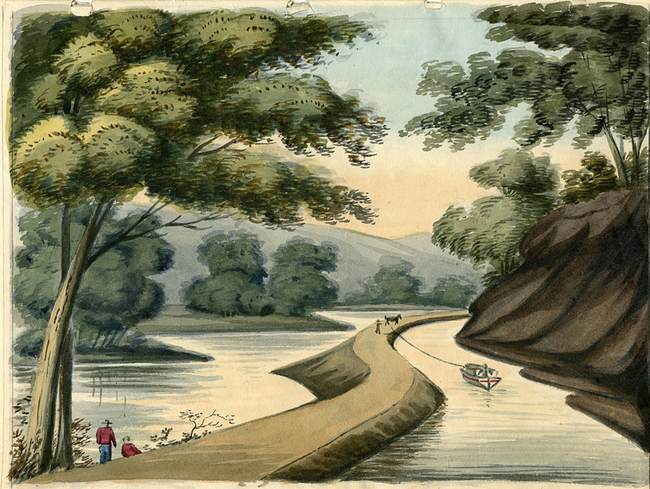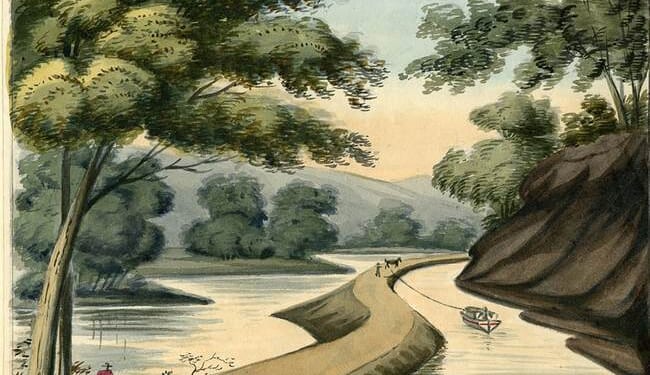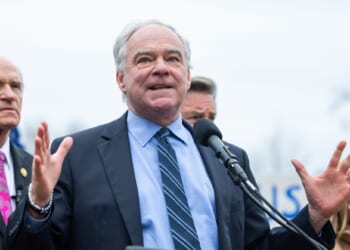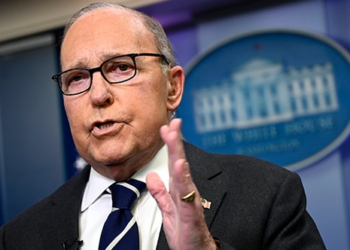
It was derisively called “Clinton’s Big Ditch.” after the New York governor who pushed through the financing and drove the impossible idea of building a 363-mile canal connecting the Great Lakes with New York City.
DeWitt Clinton tried to get financing from Congress for his project, which Thomas Jefferson called “madness.” However, President James Madison believed that using federal dollars for a state project was unconstitutional and refused to sign the bill authorizing congressional funds.
America’s longest canal up to that point was 27 miles. Clinton was proposing the construction of a canal 13 times larger, much of it through wilderness, using Irish immigrant labor and, most astonishingly, without any trained engineers.
The original engineers were largely self-taught locals who designed and constructed the canal despite having never seen one before. According to History.com, they included “a few inexperienced surveyors and at least one local math teacher. ” The two chief engineers were Benjamin Wright and James Geddes, “lawyers by trade who learned how to survey by prosecuting land disputes.”
Only in America.
Construction began in 1817. Eventually, 9,000 strong backs, working with shovels, picks, and axes, dug the 363 miles of canal with 18 aqueducts and 83 locks to compensate for elevation changes en route.
The canal opened the Midwest to the East Coast, and the payoff was immediate.
Within a few years, shipping rates from Lake Erie to New York City fell from US$100 per ton to under $9. Annual freight on the canal eclipsed trade along the Mississippi River within a few decades, amounting to $200 million – which would be more than $8 billion today.
Commerce drove industry and immigration, enriching the canal towns of New York – transforming villages like Syracuse and Utica into cities. From 1825-1835, Rochester was the fastest-growing urban center in America.
By the 1830s, politicians had stopped ridiculing America’s growing canal system. It was making too much money. The hefty $7 million investment in building the Erie Canal had been fully recouped in toll fees alone.
The Erie Canal not only transformed America, but, by allowing for the export of massive amounts of Midwestern farm products to Europe, American farmers drove a large number of small farmers in Europe out of business. Many of them made their way to America.
Historian Daniel Walker Howe wrote in his book, What Hath God Wrought: The Transformation of America, 1815-1848, “The small capitalist farmers of North America hacked away at the economic base of the ruling landed classes in Europe more destructively than all the revolutionaries on the continent.”
The Erie Canal’s success set off a canal-building boom. Most were failures, but several were hugely successful, like the Ohio and Erie Canal and the Champlain Canal. Abraham Lincoln, like most politicians in the Midwest, was a big supporter of canals. Canals represented connections. Until the age of the railroad, canals were the only means of getting farm products from the prairie to larger markets.
By lessening the commercial and political isolation of prairie farmers, the canal helped to populate the prairies by connecting them with Eastern markets. And by linking Americans living west of the Appalachian mountains to the Hudson River, it created New York City as a financial center. One day in 1824, Howe writes, there were 324 ships in New York harbor. One day in 1836, there were 1,241. Through the city’s port, America exported grain and revolution.In 1986, New York’s U.S. Sen. Daniel Patrick Moynihan, speaking in Buffalo, speculated that America’s 19th-century tsunami of immigration was “in considerable proportion” a result of “the huge wave of agricultural exports that began to reach Europe once the railroads reached our Middle West.”
The Erie Canal was hugely disruptive. Sleepy New York villages and towns like Syracuse and Rochester became major metropolitan centers. The flood of wealth injected into the nation by the Erie Canal proved to be very unsettling. It set off a religious revival that included the Second Great Awakening, a reaction to the economic dynamism and social reform movements of the 19th century.
In two decades, more freight was moving down the Erie Canal than was being floated down the Mississippi River from the Midwest to New Orleans. It would be an exaggeration to say that the Erie Canal created modern America, but it’s hard to imagine America today without it.
The Schumer Shutdown is here. Rather than put the American people first, Chuck Schumer and the radical Democrats forced a government shutdown for healthcare for illegals. They own this.
Help us continue to report the truth about the Schumer Shutdown. Use promo code POTUS47 to get 74% off your VIP membership.










